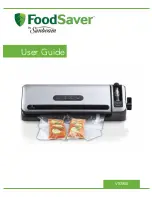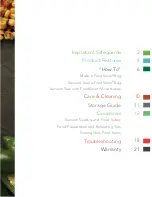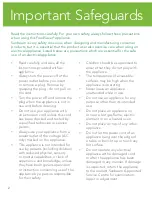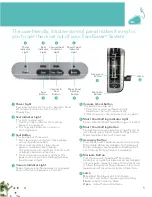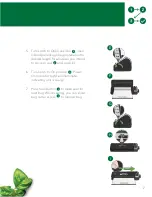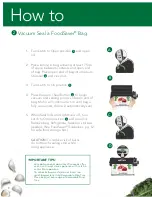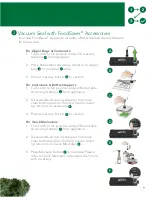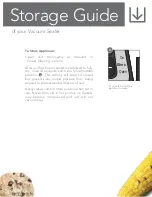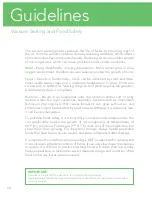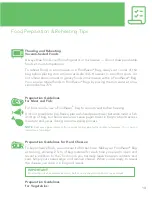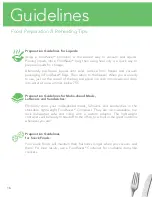
12
Vacuum Sealing and Food Safety
The vacuum sealing process extends the life of foods by removing most of
the air from the sealed container, thereby reducing oxidation, which affects
nutritional value, flavor and overall quality. Removing air can also inhibit growth
of microorganisms, which can cause problems under certain conditions:
Mold
– Easily identified by its fuzzy characteristic. Mold cannot grow in a low
oxygen environment, therefore vacuum sealing can slow the growth of mold.
Yeast
– Results in fermentation, which can be identified by smell and taste.
Yeast needs water, sugar and a moderate temperature to grow. It can also
survive with or without air. Slowing the growth of yeast requires refrigeration,
while freezing stops it completely.
Bacteria
– Results in an unpleasant odor, discoloration and/or soft or slimy
texture. Under the right conditions, anaerobic bacteria such as Clostridium
Botulinum (the organism that causes Botulism) can grow without air and
sometimes cannot be detected by smell or taste. Although it is extremely rare,
it can be very dangerous.
To preserve foods safely, it is critical that you maintain low temperatures. You
can significantly reduce the growth of microorganisms at temperatures of
40°F (4°C) or below. Freezing at 0°F (-17°C) does not kill microorganisms, but
stops them from growing. For long-term storage, always freeze perishable
foods that have been vacuum sealed, and keep refrigerated after thawing.
It is important to note that vacuum sealing is NOT a substitute for canning and
it cannot reverse the deterioration of foods. It can only slow down the changes
in quality. It is difficult to predict how long foods will retain their top-quality
flavor, appearance or texture because it depends on age and condition of the
food on the day it was vacuum sealed.
IMPORTANT:
Vacuum sealing is NOT a substitute for refrigeration or freezing.
Any perishable foods that require refrigeration must still be refrigerated or frozen after
vacuum sealing.
Guidelines
Summary of Contents for VS7850
Page 1: ...VS7850 User Guide...
Page 2: ...www FoodSaver com...
Page 22: ...20 Notes...
Page 23: ...21...

